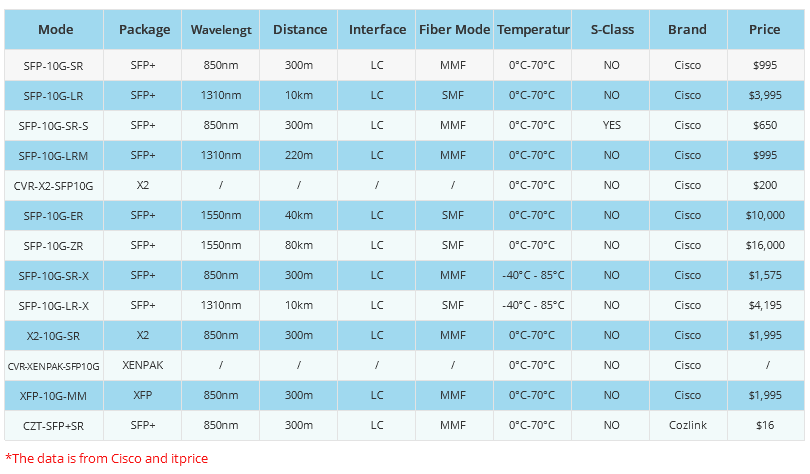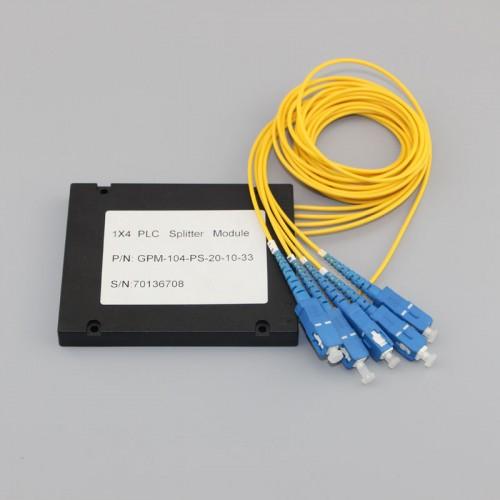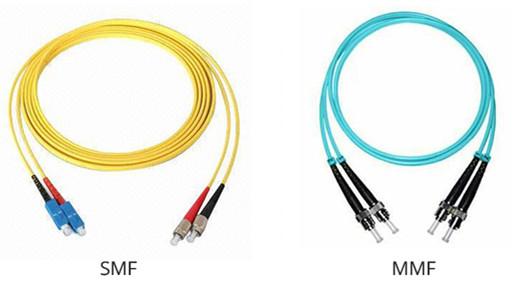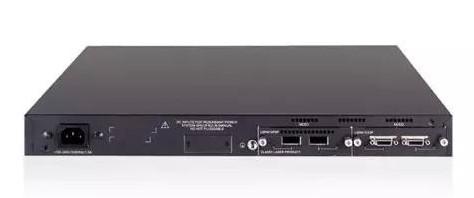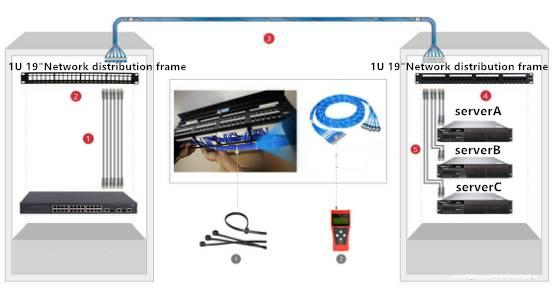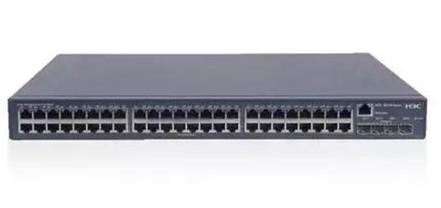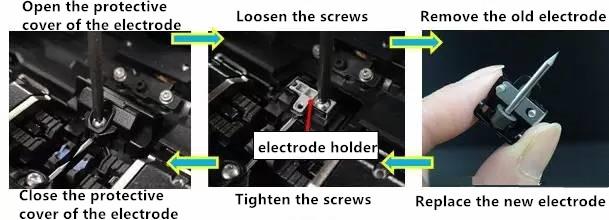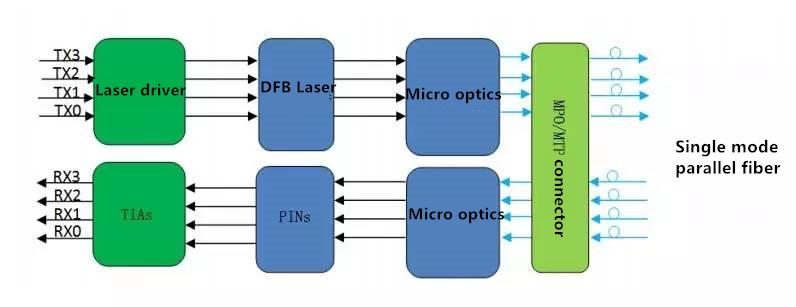- Related articles
- Optical Transceivers for Cisco SG250-26HP-K9-EU Switch
- Optical Transceivers for Cisco WS-C3650-48TQ-S Switch
- What Is GYDTA Fiber Optic Cable?
- What is Overhead Fiber Optic Cable?
- All Cisco DWDM-XFP-35.04's information (List price, Specs, Datasheet PDF, Compatibility ma
- What is Dark fiber?
- Optical Transceivers for Cisco WS-C3560V224PSS-RF Switch
- Optical Transceivers for Cisco WS-C3650-48PD-S Switch
- Difference between XENPAK and QSFP+
- All Cisco XFP-10GZR-OC192LR’s Information (Overview, Features, Datasheet PDF, Price, Speci
Recommend tag
Research on the Application of Optical Modules in 40G Data Center Network Cabling
2024-11-11
Application of 40G QSFP+Optical Module
There are multiple types of 40G QSFP+optical modules, including 40GBASE-SR4, 40GBASE-LR4, 40GBASE-ER4, etc. This section will provide a detailed introduction to these three types of optical modules and their applications.The 40GBASE-SR4 optical module adopts MTP/MPO interface, with a working wavelength of 850nm, and is generally used in multimode applications. When used together with OM3/OM4 multimode fiber, its transmission distance is 100m and 150m respectively, mainly used to connect network equipment in data centers. The 40GBASE-SR4 optical module can not only use MTP/MPO fiber jumpers to connect two 40G network devices, but also be used together with MTP/MPO to LC fiber jumpers to connect 40G network devices to 10G network devices.
40G Ethernet is widely popular in data centers, and there are two options to achieve 40G connectivity: ① using high-speed cable DAC or active fiber optic cable AOC, which are suitable for short distance connections, low cost, and easy to install and maintain. ② Using optical modules with jumpers, suitable for long-distance connections. Next, Yitian Guang Communication will explain to you about 40G network cabling.

1. Cabling link length 0.5~50 meters
DAC is commonly used for connections in racks, and it connects servers and storage to ToR switches. High speed cable DAC can achieve link lengths of up to 7m-10m, while AOC typically involves connections between switches, with link lengths up to 50m.2. Cabling link length 50~150 meters
When the link length exceeds 50m, a 40G SR4 (EQ854X-3MCD01) optical module is required for connection, with MPO interface. When used with OM3 multimode fiber, the transmission distance can reach 100m, and when used with OM4 multimode fiber, the transmission distance can reach 150m. The 40GBASE-BIDI (EQB854X-3LCD01) single fiber bidirectional optical module adopts LC interface and can transmit up to 150m with OM4 multimode fiber.
3. Wiring link length of 150 meters to 2 kilometers
The EQ314X-3LCD2 optical module can work normally on both single-mode and multi-mode fibers, and the transmission distance on OM4 multi-mode fiber can reach 150m, and the transmission distance on single-mode fiber can reach 2km. Another option is the EQ314X-3MCD2 optical module, which can be paired with MPO single-mode fiber interface for a transmission distance of up to 2km. For links less than 400m, it is recommended to use EQ854X-3MCD03 optical modules in conjunction with OM4 MTP/MPO fiber jumpers.
4. Cabling link length 2~40 kilometers
The interfaces of EQ314X-3MCD10 optical module and EQxx4X-3LCD10 optical module are MTP/MPO and LC duplex, respectively. They are usually used with single-mode fiber and are suitable for long-distance links of 10km. When used together with a 40GBASE-ER4 optical module and a single-mode duplex LC fiber jumper, its transmission distance can reach 30km and 40km.
In summary, 40G network cabling can be selected according to needs. If it is a short distance connection of 0.5m-50m, it is recommended to choose DAC/AOC. When the link length exceeds 50m, it is recommended to choose to connect with optical modules.
40G jumper
40G jumpers can be divided into 40G Ethernet jumpers and QSFP+fiber optic jumpers. In enterprise networks, 40G copper wire is generally not used for network access because it is more expensive and less scalable compared to 10G copper wire. Currently, only Cat8 copper wire is available for 40G networks. On the contrary, the networking methods for 40G fiber optic access need to be more diversified. Available fiber optic jumpers include 40G fiber branch jumpers (such as MTP-LC cables), backbone cables (such as MPO backbone cables), and conventional fiber optic jumpers such as OM3, OM4, SMF, etc. Enterprise network users often use these jumpers simultaneously to achieve 40G-40G transmission, and even 10G to 40G network upgrades.40G Ethernet Switch
Although most IT professionals believe that 10G networks will dominate the Ethernet market for a long time, upgrading from 10G Ethernet networks to 40G or even higher speeds is an inevitable choice for enterprises to maintain their competitiveness. Due to the fact that most users are still using 1G or 10G networks, switches that offer multiple rate options are more popular among users. Therefore, most switch suppliers offer multi rate switches that can handle speeds of 10/25/40/100G while meeting the current and future needs of users. Therefore, a 40G Ethernet switch typically comes with some SFP+, SFP28, QSFP+, and QSFP28 hybrid ports, which can be used as a core switch or spine/aggregation layer switch in data centers.To meet the demand for high-speed Ethernet, cloud computing, virtual data centers and other services, the transformation of communication transmission networks from 10G to 40G is unstoppable. In addition to increasing equipment and fiber optic cables to achieve greater bandwidth and throughput, improving port density is also a widely accepted method for data centers to transition to 40G. 40G data center solutions typically consist of 40G switches paired with 40G QSFP+optical modules and MTP/MPO fiber jumpers.

TECHNICAL SUPPORT
Get solutions or consultation from the technical team.




























































